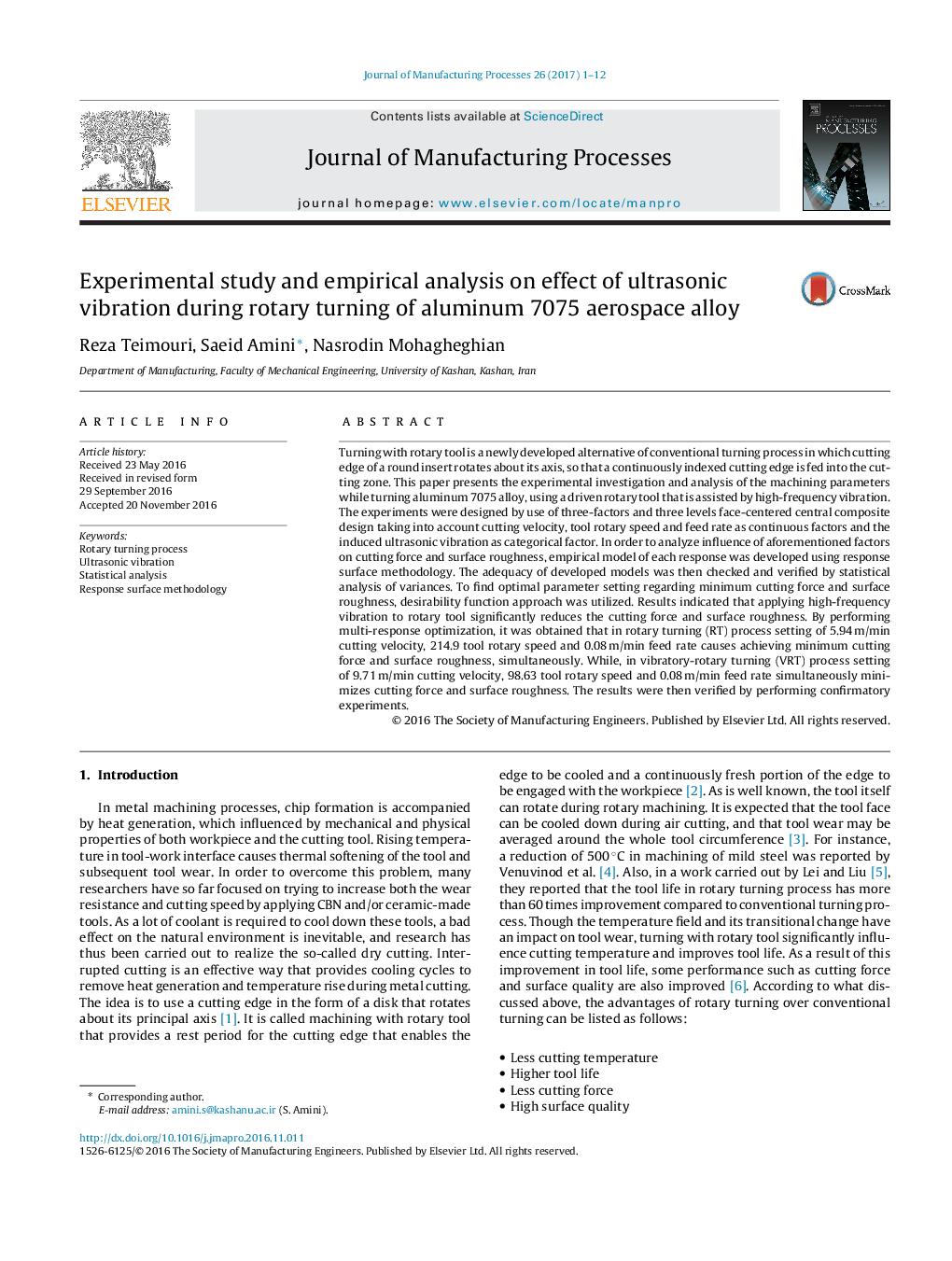| کد مقاله | کد نشریه | سال انتشار | مقاله انگلیسی | نسخه تمام متن |
|---|---|---|---|---|
| 5469267 | 1519230 | 2017 | 12 صفحه PDF | دانلود رایگان |
عنوان انگلیسی مقاله ISI
Experimental study and empirical analysis on effect of ultrasonic vibration during rotary turning of aluminum 7075 aerospace alloy
ترجمه فارسی عنوان
تحقیق تجربی و تحلیل تجربی بر اثرات ارتعاش اولتراسونیک در هنگام چرخش آلیاژ فضای آلومینیوم 7075
دانلود مقاله + سفارش ترجمه
دانلود مقاله ISI انگلیسی
رایگان برای ایرانیان
کلمات کلیدی
روند چرخش روتاری، ارتعاشات التراسونیک، تحلیل آماری، روش سطح پاسخ،
موضوعات مرتبط
مهندسی و علوم پایه
سایر رشته های مهندسی
مهندسی صنعتی و تولید
چکیده انگلیسی
Turning with rotary tool is a newly developed alternative of conventional turning process in which cutting edge of a round insert rotates about its axis, so that a continuously indexed cutting edge is fed into the cutting zone. This paper presents the experimental investigation and analysis of the machining parameters while turning aluminum 7075 alloy, using a driven rotary tool that is assisted by high-frequency vibration. The experiments were designed by use of three-factors and three levels face-centered central composite design taking into account cutting velocity, tool rotary speed and feed rate as continuous factors and the induced ultrasonic vibration as categorical factor. In order to analyze influence of aforementioned factors on cutting force and surface roughness, empirical model of each response was developed using response surface methodology. The adequacy of developed models was then checked and verified by statistical analysis of variances. To find optimal parameter setting regarding minimum cutting force and surface roughness, desirability function approach was utilized. Results indicated that applying high-frequency vibration to rotary tool significantly reduces the cutting force and surface roughness. By performing multi-response optimization, it was obtained that in rotary turning (RT) process setting of 5.94Â m/min cutting velocity, 214.9 tool rotary speed and 0.08Â m/min feed rate causes achieving minimum cutting force and surface roughness, simultaneously. While, in vibratory-rotary turning (VRT) process setting of 9.71Â m/min cutting velocity, 98.63 tool rotary speed and 0.08Â m/min feed rate simultaneously minimizes cutting force and surface roughness. The results were then verified by performing confirmatory experiments.
ناشر
Database: Elsevier - ScienceDirect (ساینس دایرکت)
Journal: Journal of Manufacturing Processes - Volume 26, April 2017, Pages 1-12
Journal: Journal of Manufacturing Processes - Volume 26, April 2017, Pages 1-12
نویسندگان
Reza Teimouri, Saeid Amini, Nasrodin Mohagheghian,
